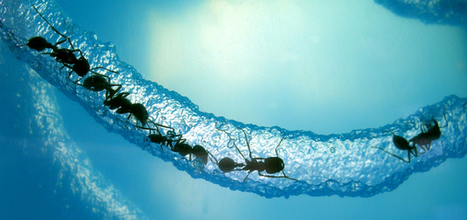"Ever notice how ant colonies so successfully explore and exploit resources in the world … to find food at 4th of July picnics, for example? You may find it annoying. But as an ecologist who studies ants and collective behavior, I think it’s intriguing — especially the fact that it’s all done without any central control. What’s especially remarkable: the close parallels between ant colonies’ networks and human-engineered ones. One example is “Anternet”, where we, a group of researchers at Stanford, found that the algorithm desert ants use to regulate foraging is like the Traffic Control Protocol (TCP) used to regulate data traffic on the internet. Both ant and human networks use positive feedback: either from acknowledgements that trigger the transmission of the next data packet, or from food-laden returning foragers that trigger the exit of another outgoing forager."
 Your new post is loading...
Your new post is loading...
 Your new post is loading...
Your new post is loading...



















